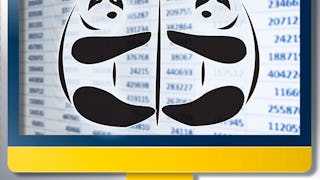This course features Coursera Coach!
A smarter way to learn with interactive, real-time conversations that help you test your knowledge, challenge assumptions, and deepen your understanding as you progress through the course. In this course, you will gain a comprehensive understanding of NumPy, a powerful Python library for numerical computing. By the end, you will be able to manipulate data, perform mathematical operations, and visualize data effectively. Through hands-on experience with real-world examples, you'll learn essential skills such as array indexing, slicing, and element-wise operations. Whether you're new to NumPy or looking to reinforce your knowledge, this course will guide you through all the fundamentals and advanced techniques. The course begins by introducing NumPy and its setup in the Python environment, ensuring you're well-equipped with the necessary tools. You'll review Python basics, get familiar with Jupyter notebooks, and dive into NumPy arrays and their data types. After mastering the basics, you'll explore advanced concepts such as array slicing, broadcasting, and reduction operations. Graphing and visualization techniques will help you bring data insights to life, while shape and sort operations further enhance your understanding of NumPy arrays. In later sections, you'll get hands-on experience with time series analysis using NumPy. You'll also learn how to handle structured arrays and work with data types like casting, size, and structure. Through exercises and practice, you'll gain the confidence to apply your skills in various real-world contexts, from data manipulation to scientific computing. This course is ideal for beginners who want to learn data manipulation using NumPy. It's perfect for those looking to enhance their Python programming skills with a focus on numerical computations. No advanced knowledge is required, but a basic understanding of Python is recommended. The course is structured to be accessible and rewarding, regardless of your prior experience with NumPy.
















